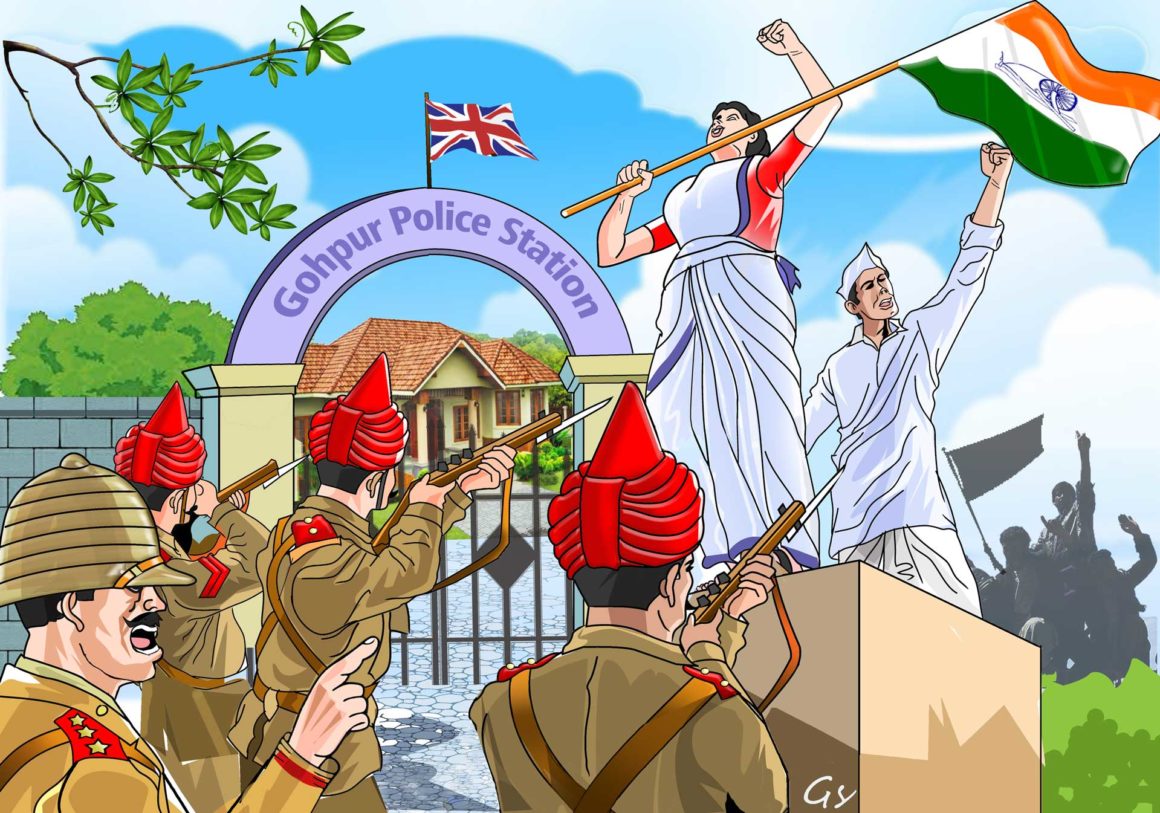The Indian Freedom Struggle threw up many leaders such as Mahatma Gandhi, Sardar Patel, Abul Kalam Azad and Jawaharlal Nehru. However, there were a number of other unsung heroes who fought and gave up their lives for freedom. One such hero is Kanaklata Barua from Assam. This is her story retold for children.
It was the 1940s. India’s Freedom Struggle was at its peak. Young Indians especially were getting impatient. They wanted to be rid of the British rule as soon as possible.
A band of youngsters in Gohpur, Assam, had formed the Mrityu Bahini, a group determined to lay down their lives for the nation.
On August 8, 1942, the youngsters were excited. Mahatma Gandhi was expected to announce an action plan at Gowalia Tank in far-off Mumbai. It would take a day or two for news to reach them.
However, the very next day they heard that Gandhiji and several other leaders had been arrested by the police. The Indian National Congress, which was spearheading the freedom movement, was banned. So were all public gatherings.
Mahatma Gandhi’s message
“But what did the Mahatma say? What does he want us to do?” asked Mukunda Kakati, an activist of the Mrityu Bahini. They had no clue as the government had ordered newspapers not to carry reports of Gandhiji’s speech.
Fortunately, those who attended the meeting, had noted what Gandhiji had said. They made several copies of his speech and secretly sent it to all parts of the country. One such copy reached Gohpur. A young lad came running, clutching a piece of paper.
Kanaklata Barua, another activist of the group, snatched the crumpled paper, and read out, as her comrades listened with rapt attention.
The note said that Gandhiji had asked the British to Quit India, and then given his countrymen a simple message. “This is the mantra Mahatma has given us,” announced Kanaklata, “He wants us to carry it on our hearts. The mantra is: Do or Die. We shall either free India or die in the attempt. We shall not live to see the continuation of our slavery.”
Mukunda Kakoti shouted. “We are free. We don’t need anyone to give us freedom. We give freedom unto ourselves. We are free.”
Kanaklata added, “The British will no longer order us. We refuse to accept them as our Masters.”
The youngsters clinched their fist. There was fire in their eyes. They said resolutely, in one voice, “Yes. We shall free India. If we have to pay with our lives, so be it.”
A youngster chipped in, “If we are free, why do we see the British flag flying in Gohpur?”
“Let’s set it right. We shall fly our national flag, the Tricolour, in its place,” said Kanaklata.
A daring plan
On 20 September 1942, the Bahini decided to hoist the national flag at the local police station.
In the morning, a band of young freedom fighters took out a procession, shouting, ‘Vande Mataram,’ and ‘Mahatma Gandhi Ki Jai’. The group was led by Kanaklata and they made their way to the police station.
The procession was soon stopped by the police. Ignoring them, Kanaklata walked on. “One more step, and I’ll shoot,” warned a police official.
Kanaklata responded by shouting, “Vande Mataram.” Her comrades joined her in chanting the freedom mantra, “Karo ya maro (Do or die)”.
The police shot at Kanaklata. Even as she fell, Kanaklata held the national flag high.
As Kanaklata’s grip weakened, the national flag slid from her hand. Mukunda Kakati rushed forward and took the flag from her. He stepped towards the police station. The police fired at Mukunda.
As Mukunda fell, a group of young freedom fighters took the flag to the top of the building and hoisted the national flag.
Even as Kanaklata and Mukunda Kakati closed their eyes, never to open them again, they smiled watching the Tricolour flying high.
India’s golden moment had arrived. Freedom was not far off.






